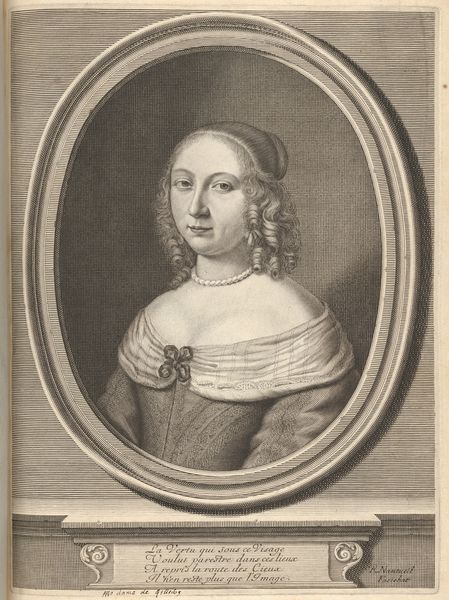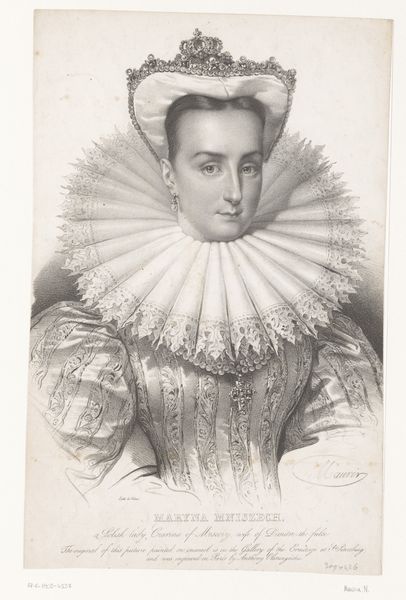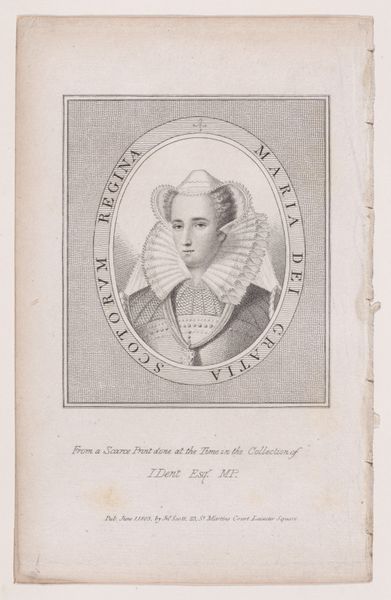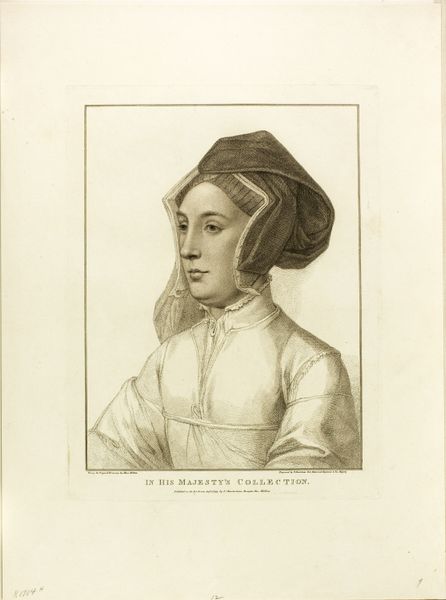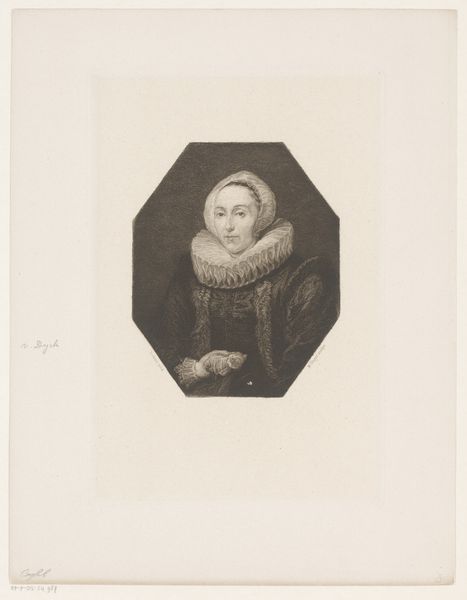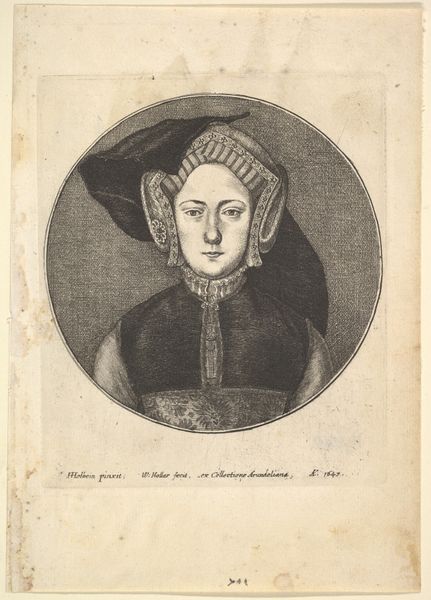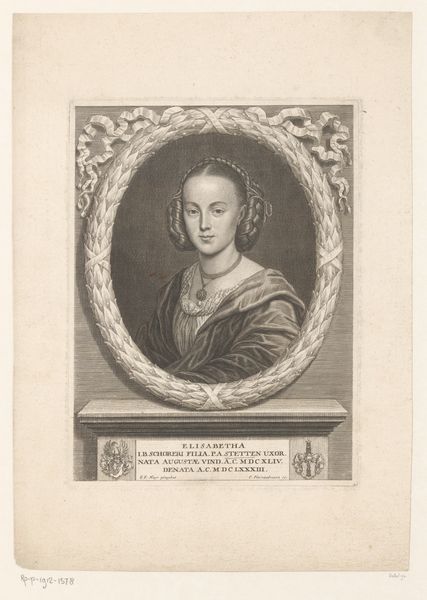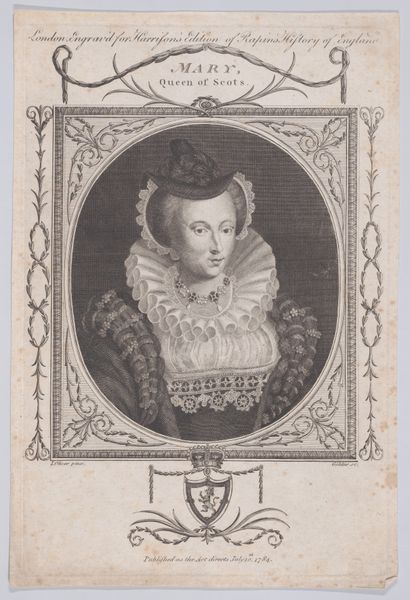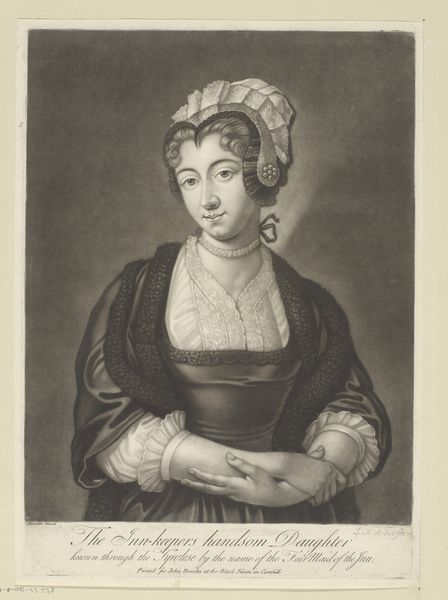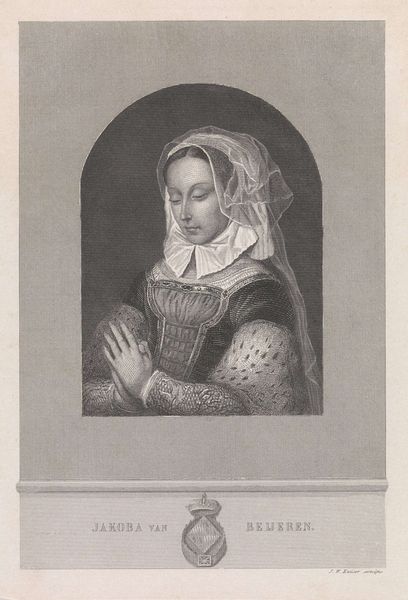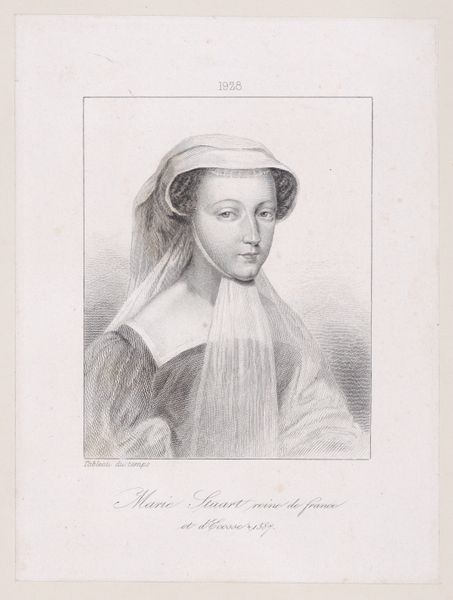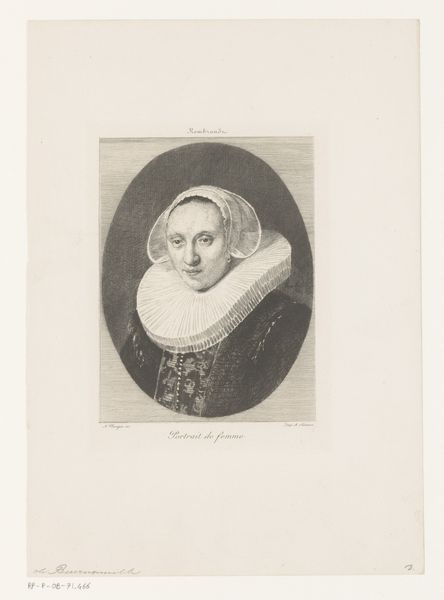
drawing, coloured-pencil, print
#
portrait
#
drawing
#
coloured-pencil
# print
#
caricature
#
coloured pencil
#
romanticism
Dimensions: Sheet: 16 1/16 × 12 1/2 in. (40.8 × 31.8 cm)
Copyright: Public Domain
Curator: This portrait of Mary, Queen of Scots, dating from 1824, is presented as a coloured pencil drawing, though it actually exists as a print. Fabroni is credited with this rendition, now housed here at the Metropolitan Museum of Art. What strikes you first about it? Editor: Melancholy, definitely. Her gaze is soft, but there's a sense of resignation, maybe even foreboding in her eyes. That stark white ruff frames her face like a halo or... a cage. Curator: A cage is apt, considering the circumstances of her life, particularly towards its tragic end. The ruff, that rigid symbol of status, becomes a visual restraint, reinforcing her confinement – both literal and metaphorical. Do you see any other symbols here? Editor: Her dress, for one thing. It’s heavily textured and quite dark. Almost somber, perhaps mirroring the weighty political intrigues she was constantly embroiled in. Those aren’t clothes for frolicking in a field. Curator: Indeed. The detailed rendering of her garments underscores the formal nature of queenship, and the visual weight reflects the burden of rule. Although this was created centuries after her execution, the memory and mythology of Mary are very present in the early 19th century. Her image continued to provoke debate about power and gender, even in this relatively modest print format. Editor: I see what you mean about the ongoing relevance. This portrait taps into that Romantic-era fascination with tragic heroines, specifically wronged women in positions of power, which were all so prevalent then. It plays into that existing cultural script surrounding Mary, a figure destined to have a woeful destiny, no? Curator: Exactly. By this period, she had evolved into a figure whose very name carried all sorts of meaning. The iconography around her serves as a vessel to unpack power, justice, and social turmoil through these sorts of Romanticized historical interpretations. What’s really intriguing to me is how prints like these shaped public perception of historical figures. Editor: And solidified them, arguably. An easily distributed image like this would become *the* visual touchstone for an entire generation. It also becomes clear how cultural forces really act through these images that at first may just appear as records. Curator: Indeed. In encountering this likeness of Mary, Queen of Scots, we're drawn not only into her history but into a larger dialogue surrounding art, politics, and popular perception across centuries. Editor: Looking closely, it’s remarkable how one relatively modest drawing could have carried such social significance then, as well as open up rich veins for thoughtful study now.
Comments
No comments
Be the first to comment and join the conversation on the ultimate creative platform.
